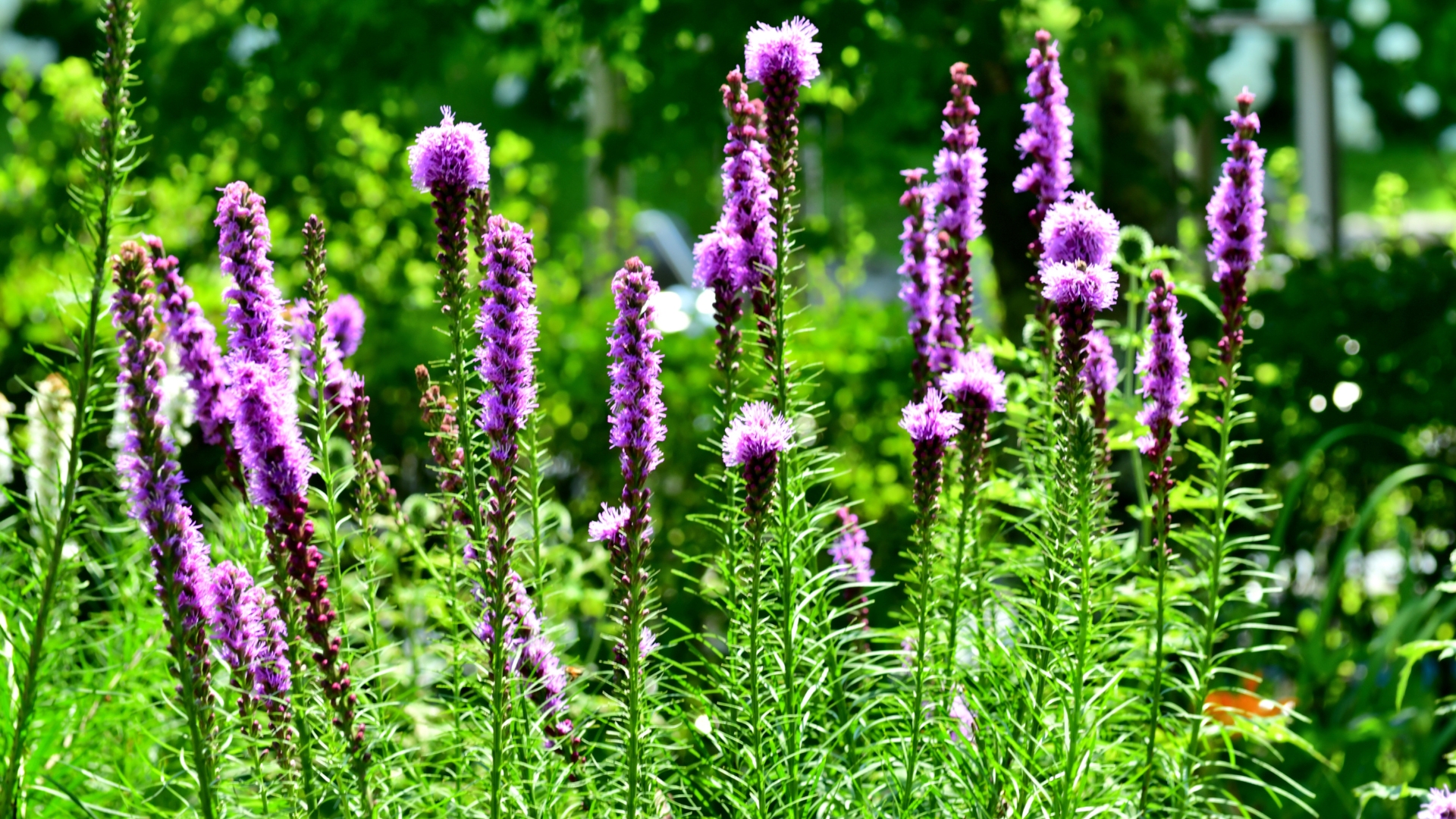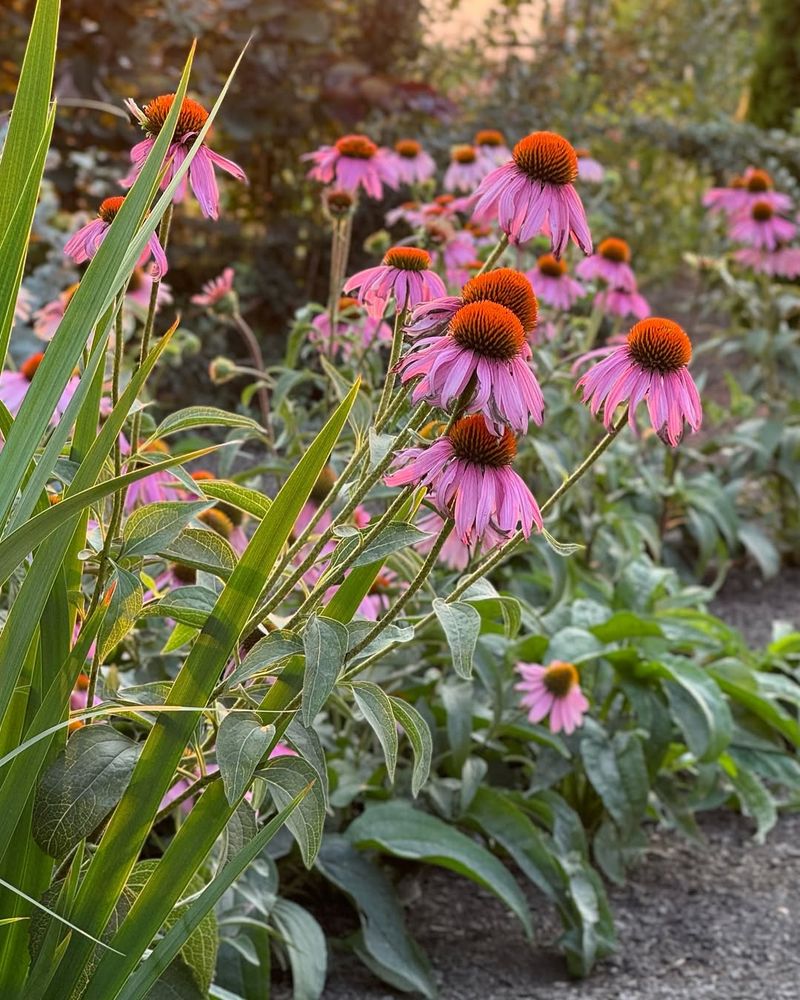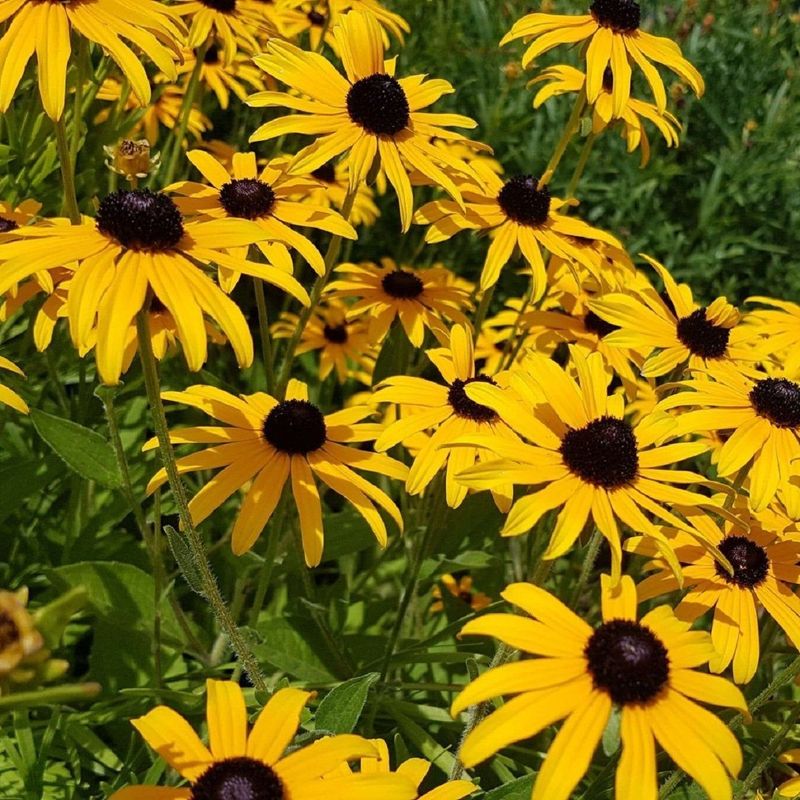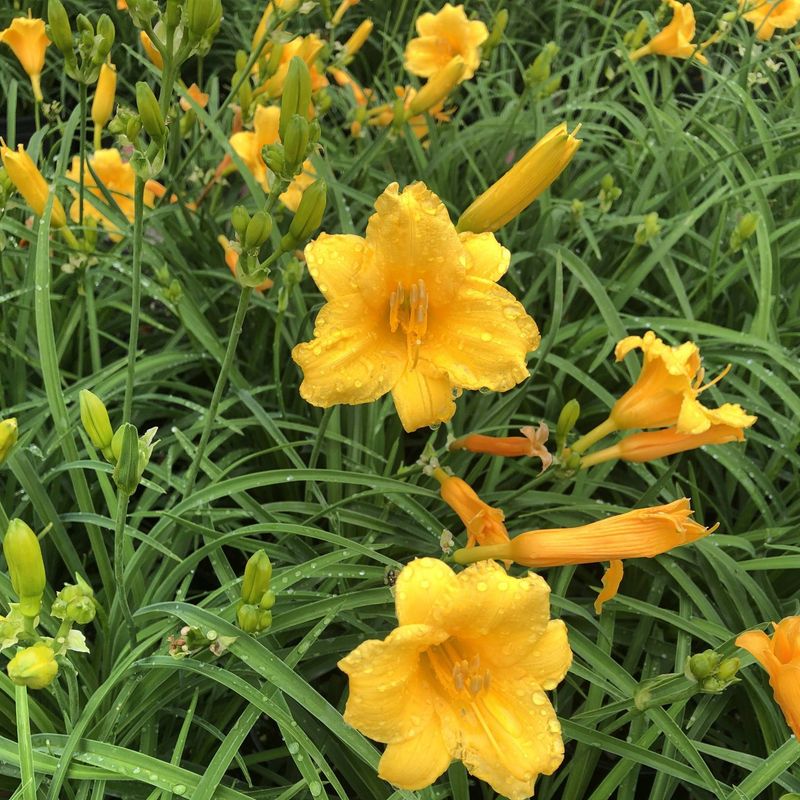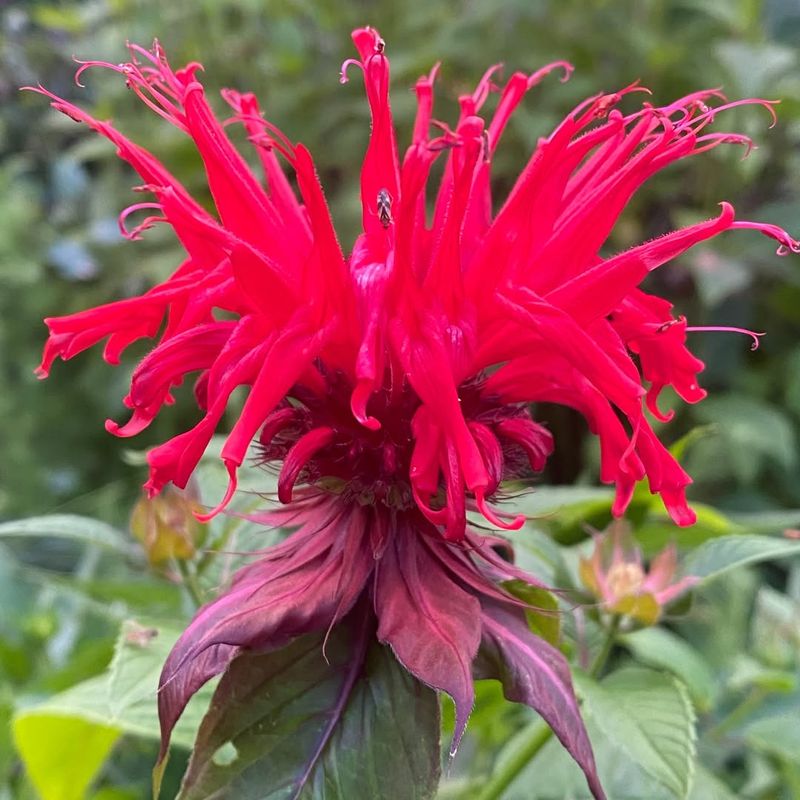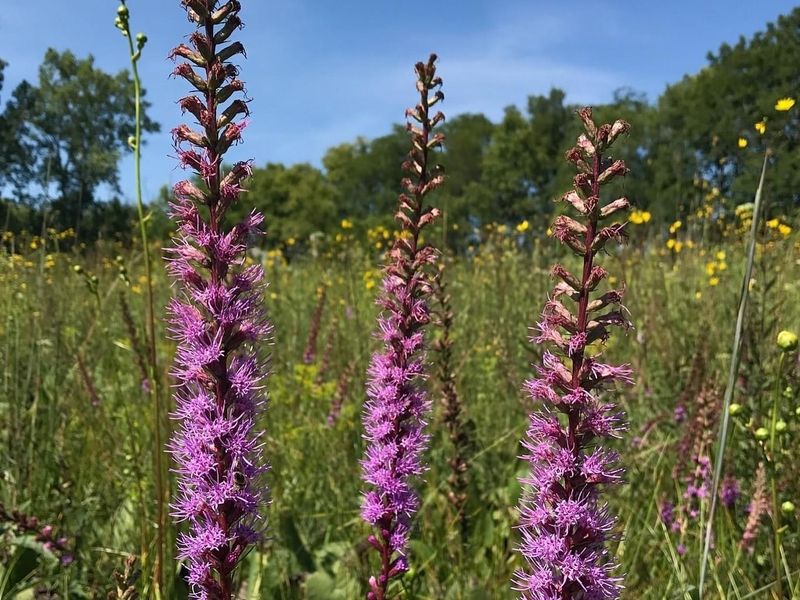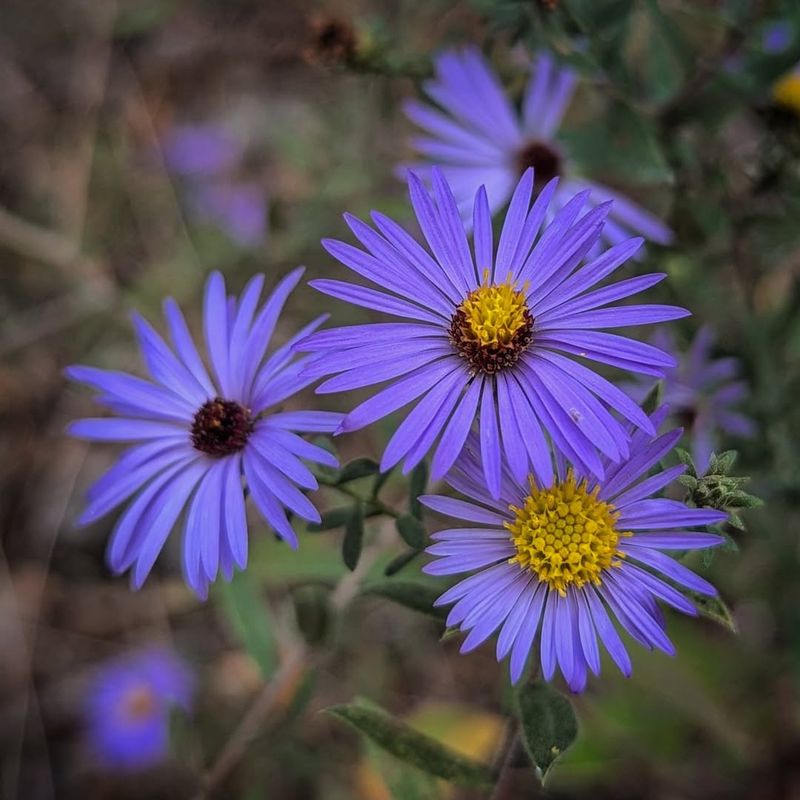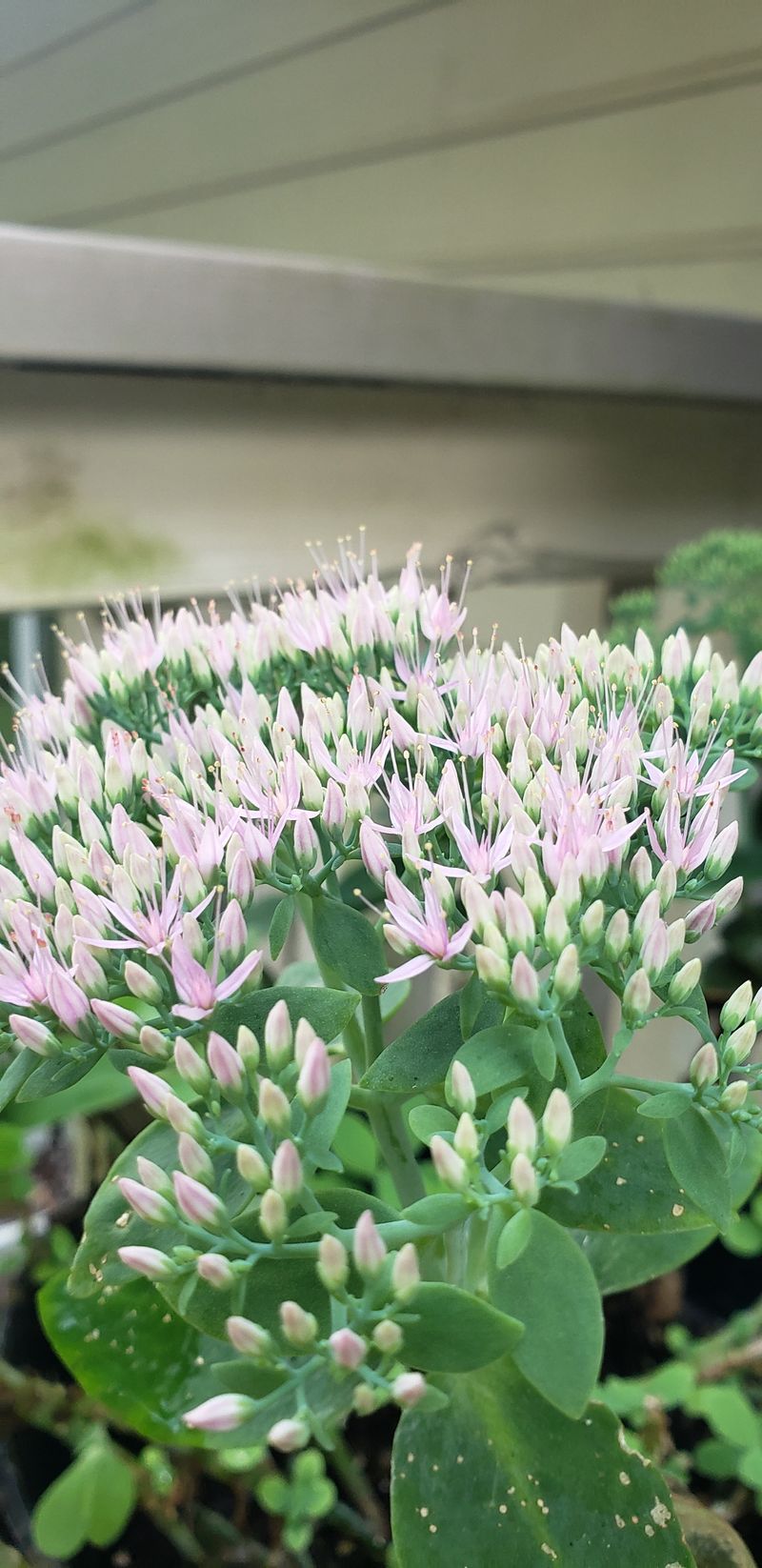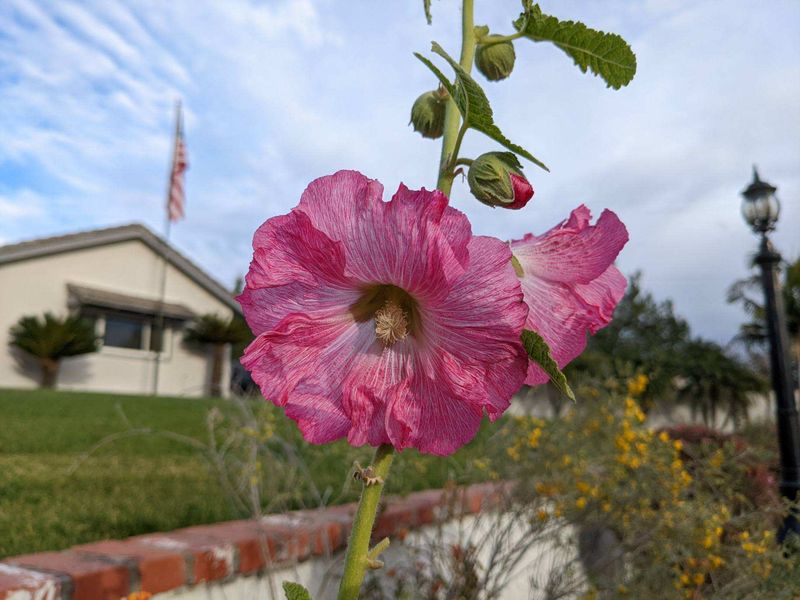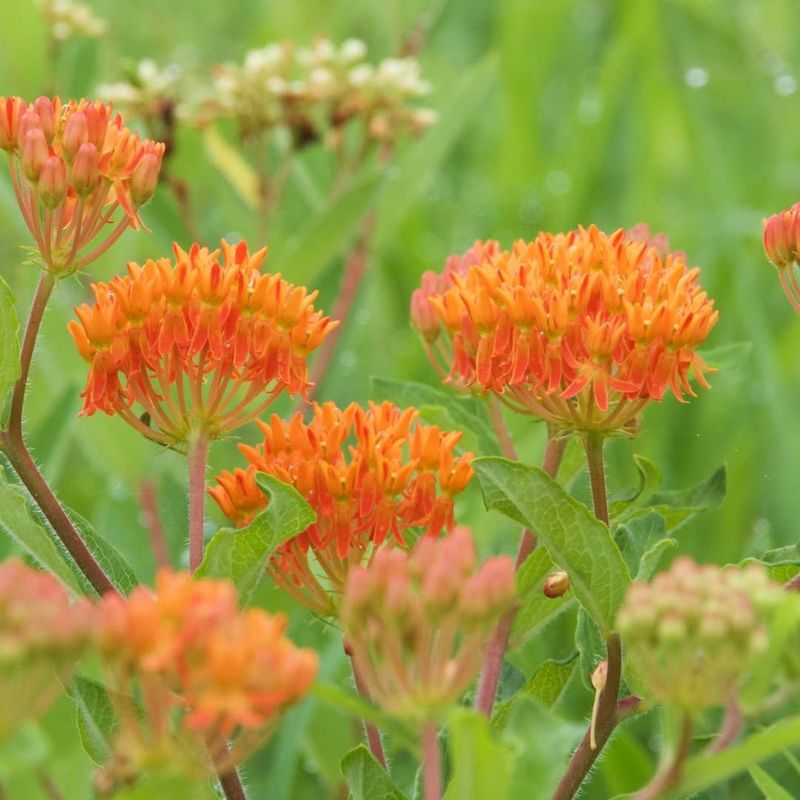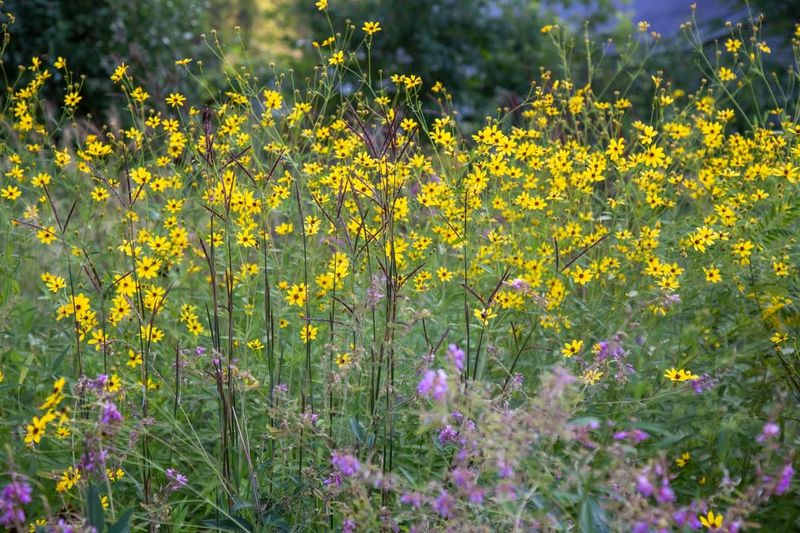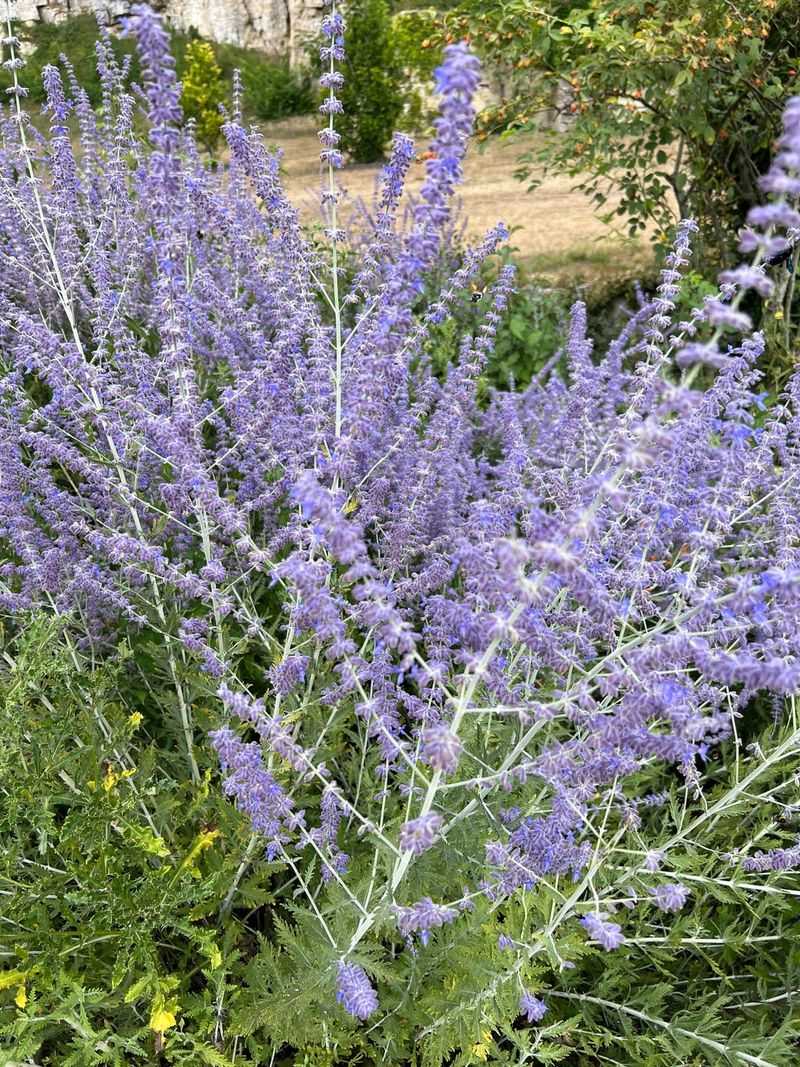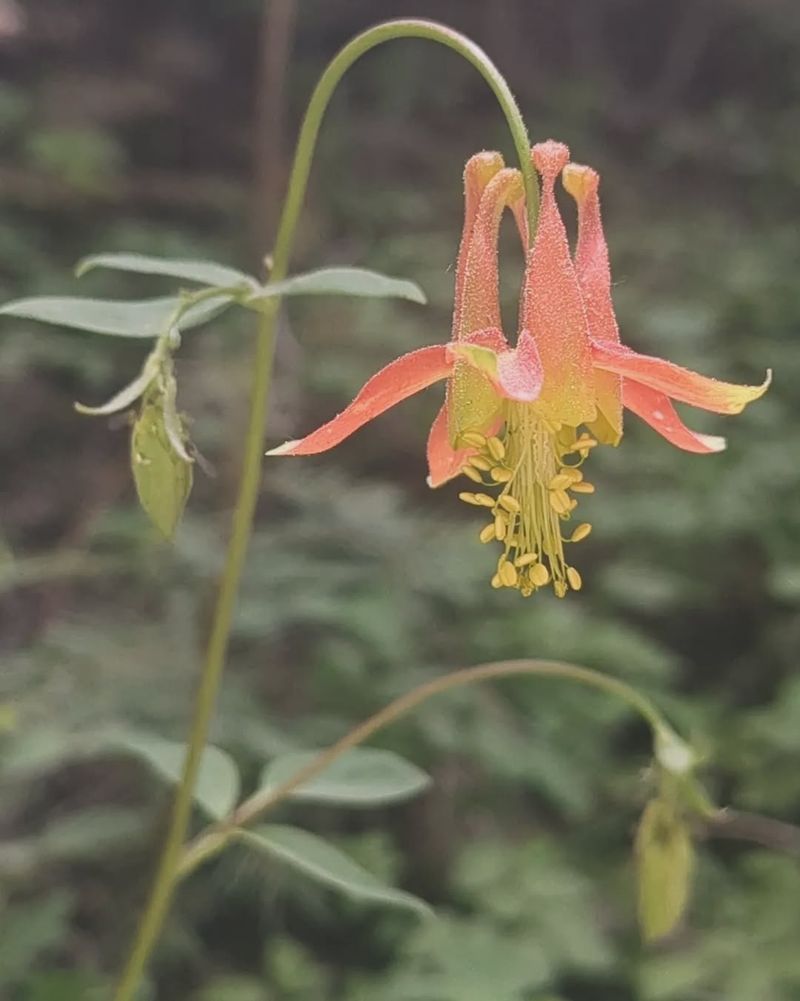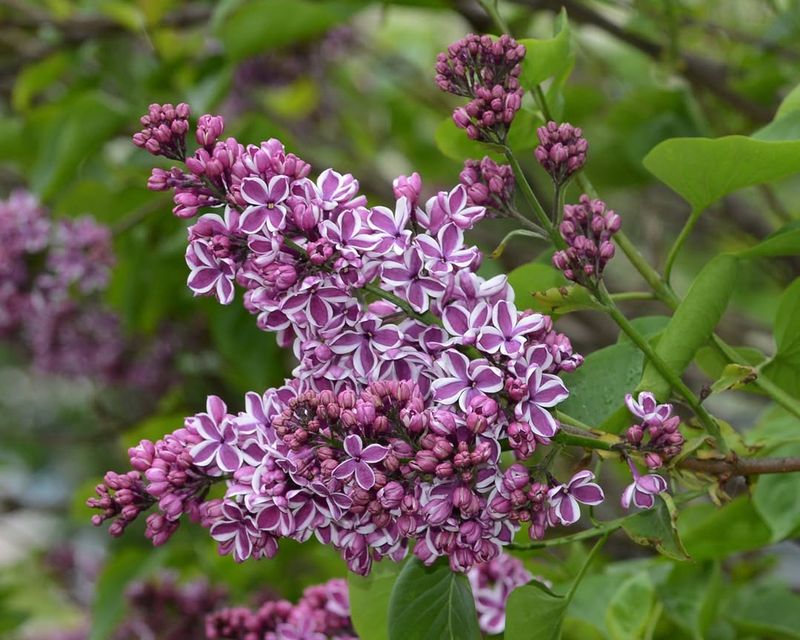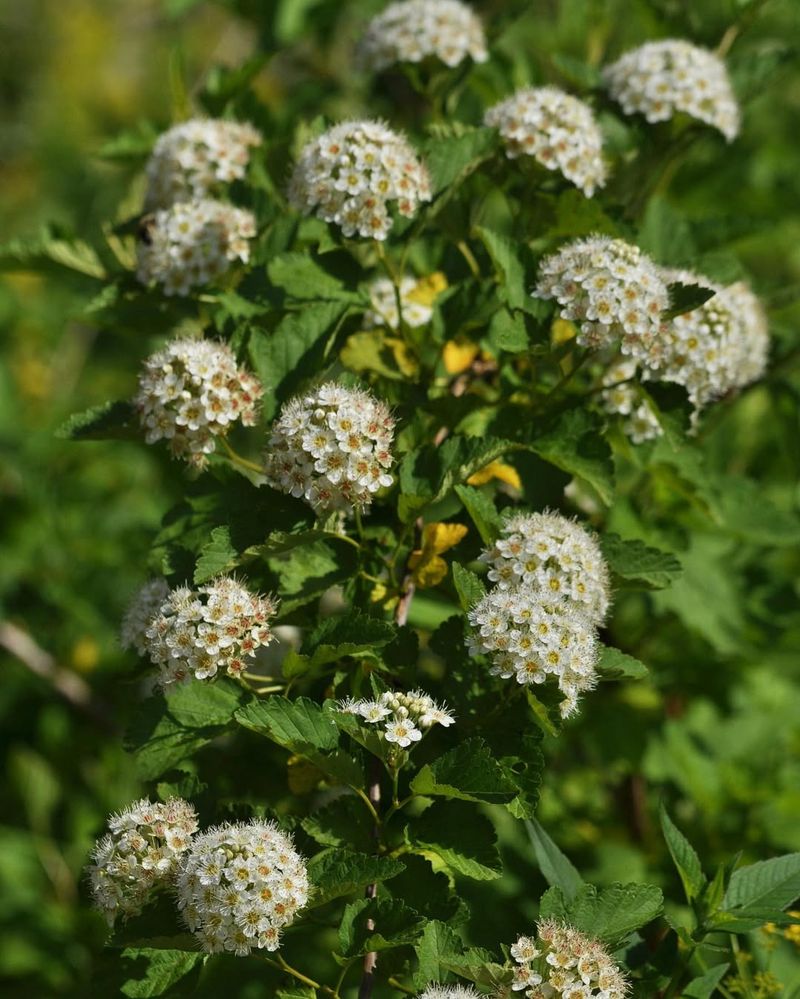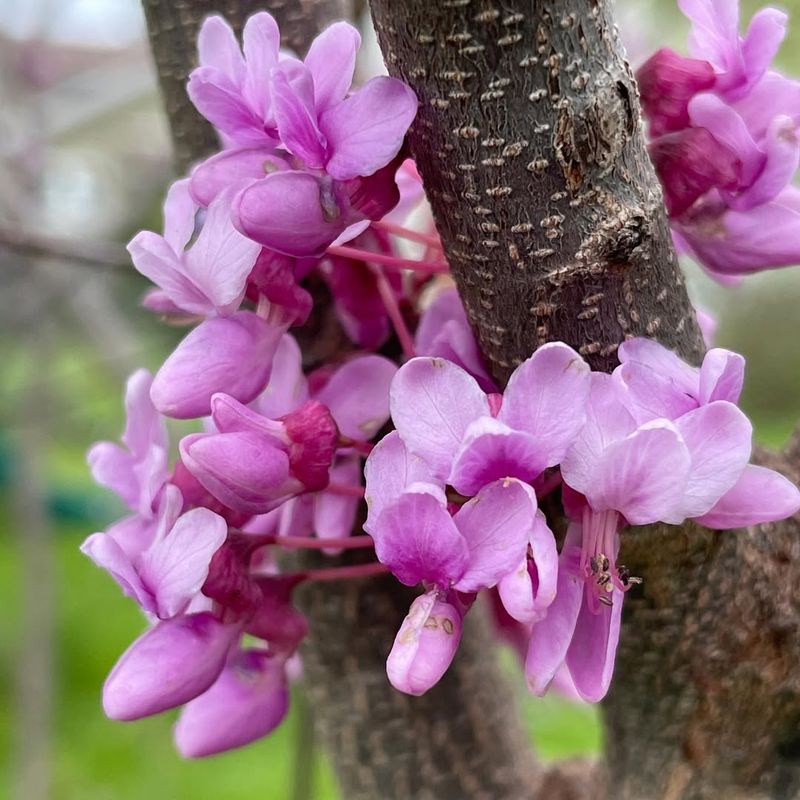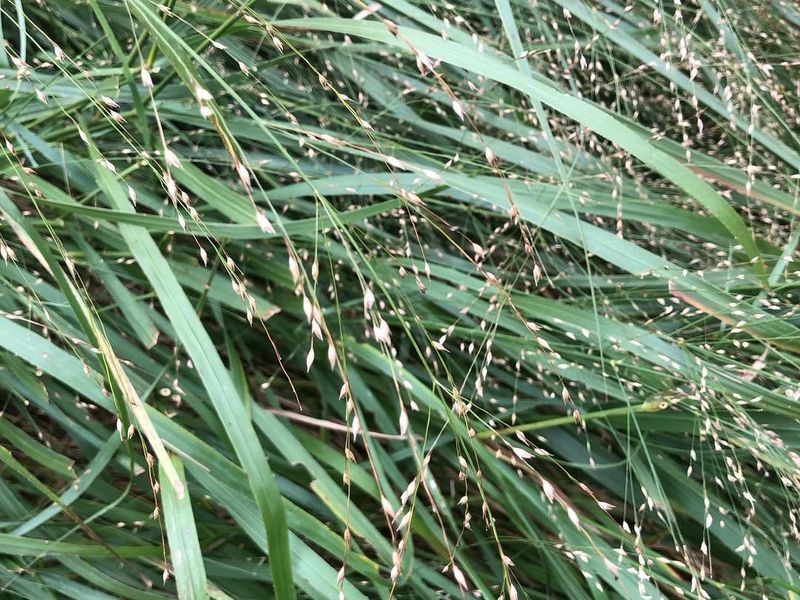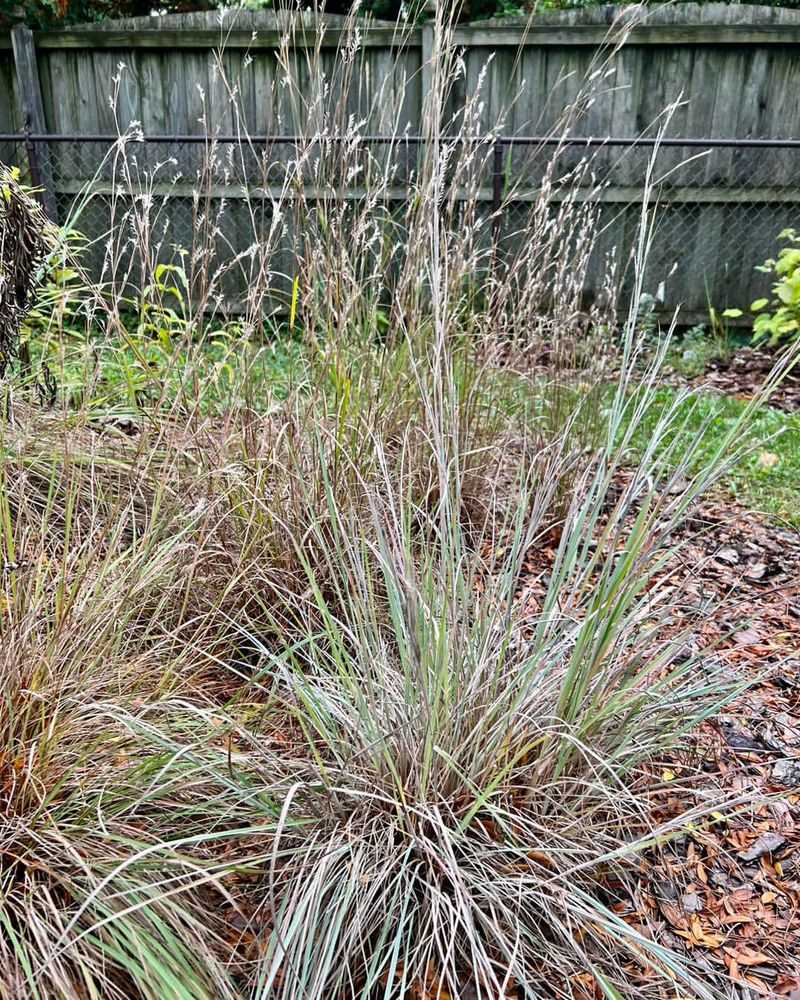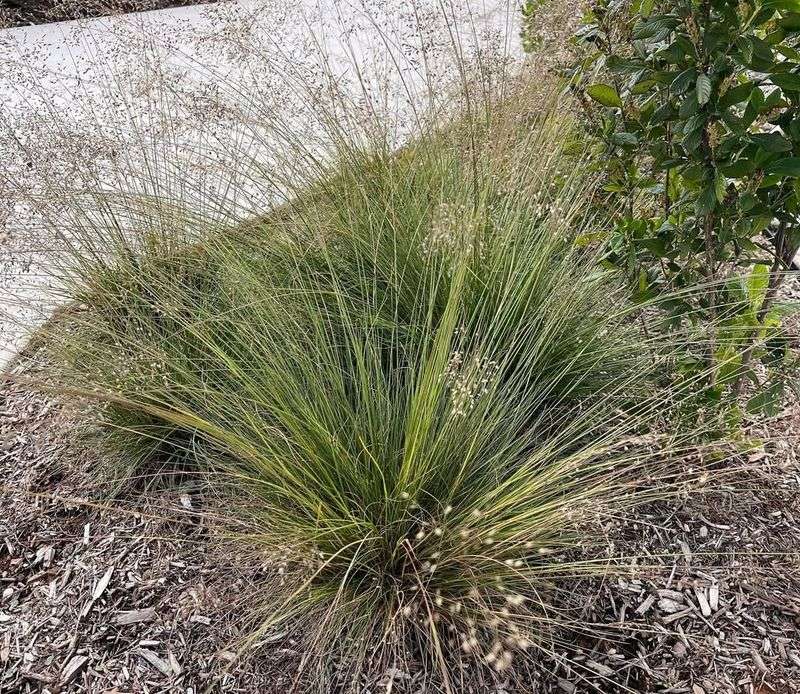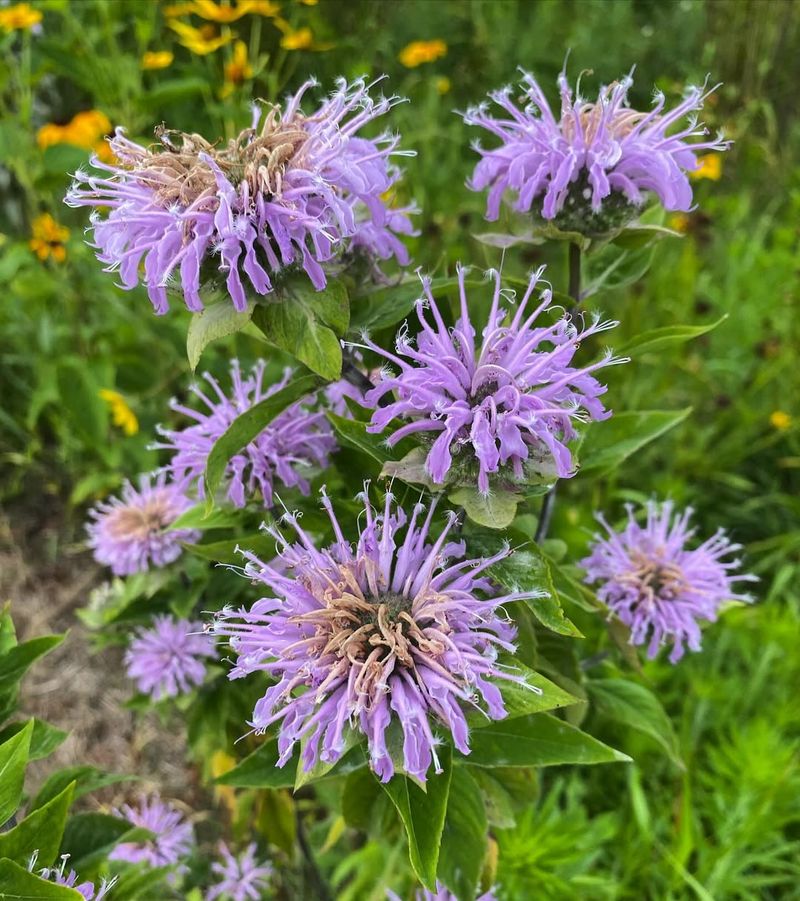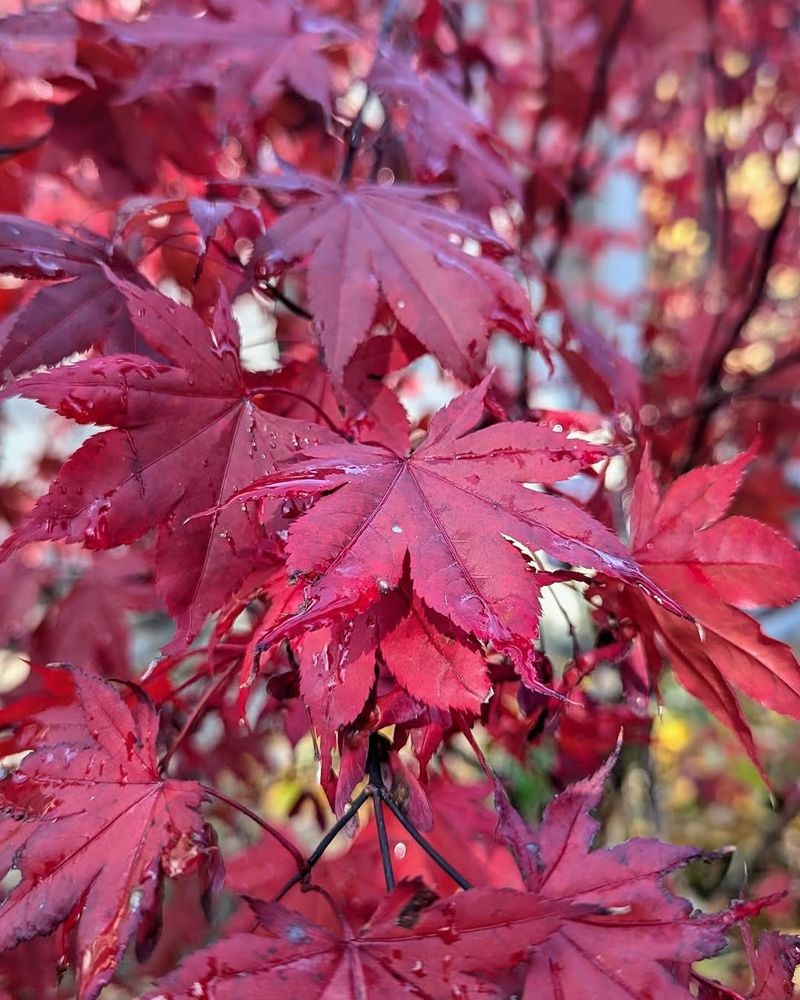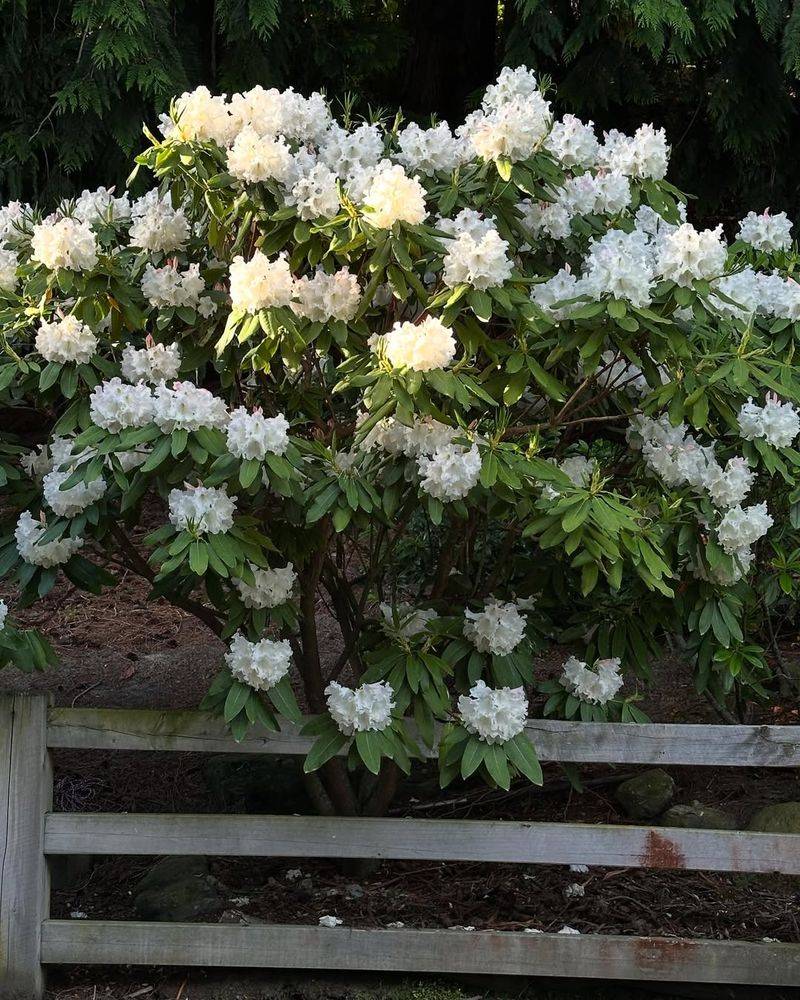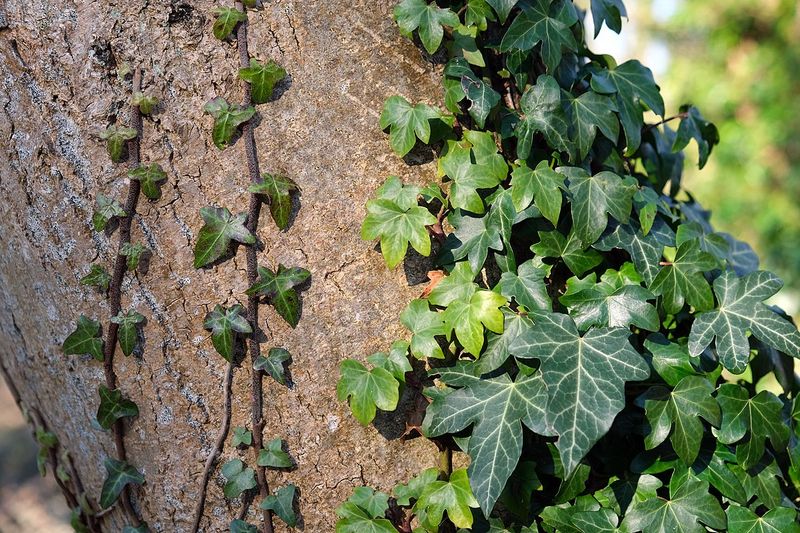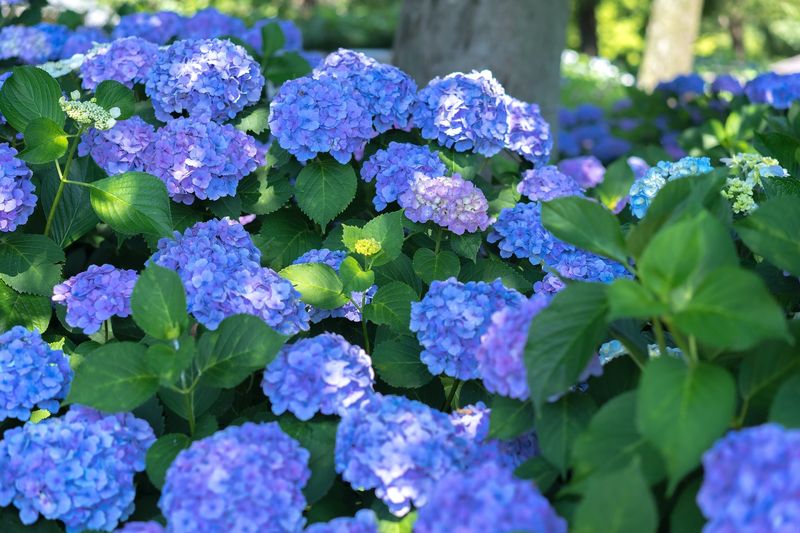The Midwest’s climate demands plants that can handle hot summers, freezing winters, and occasional drought. Whether you’re creating a lush flower bed, a pollinator-friendly garden, or a low-maintenance landscape, these 25 top-performing plants will help you achieve a thriving outdoor space. But not every plant is a good fit—some struggle with the region’s climate or become invasive headaches. Here are the best (and worst) choices for a Midwest yard.
1. Purple Coneflower (Echinacea purpurea)
When it comes to a resilient garden superstar, look no further. The Purple Coneflower, with its bold purple petals and golden center, stands tall and proud, attracting pollinators like bees and butterflies.
This daisy-like flower has a knack for thriving in Midwest gardens, showing off its beauty from early summer to fall. A true favorite among gardeners, it doesn’t just look spectacular; it helps support local wildlife.
Incorporate this in your garden, and enjoy a dance of colors and life throughout the growing season. It’s a perennial worth planting again and again!
2. Black-eyed Susan (Rudbeckia hirta)
Cheerful and sunny, these golden-yellow beauties are garden must-haves. Black-eyed Susans brighten up any space with their warm hues and welcoming presence.
Their vibrant blooms last from summer to fall, providing a constant source of food for pollinators. These perennials are perfect for adding warmth and charm to the garden.
Whether clustered in a bed or lining a pathway, they create a festive atmosphere. With minimal maintenance, they offer a big reward, making them a staple in Midwest landscapes. Let them light up your garden with their infectious cheer!
3. Daylily (Hemerocallis spp.)
Imagine a garden full of color, no matter the neglect. Enter the Daylily, a tough perennial with trumpet-shaped blooms that come in every color imaginable.
This adaptable plant thrives in Midwest gardens, requiring little more than your admiration. From vibrant reds to soft yellows, their flowers grace gardens with grace and resilience.
Even when other plants struggle, daylilies proudly bloom, reminding us of nature’s tenacity. If you want a garden that pops with color and charm, these are your go-to plants. Just plant, water a bit, and enjoy!
4. Bee Balm (Monarda didyma)
For a splash of vibrant color and a minty aroma, Bee Balm is the garden’s showstopper. Its red or purple blooms attract hummingbirds, making your space lively and enchanting.
Ideal for sunny, moisture-rich gardens, this plant thrives in the Midwest, where it can show off its striking beauty. The flowers are not only a feast for the eyes but also a haven for pollinators.
Adding Bee Balm to your garden means adding a touch of magic. Its presence promises a lively scene filled with the hum of happy visitors, both feathered and winged!
5. Blazing Star (Liatris spicata)
Drama in the garden? Yes, please! The Blazing Star, with its spiky charm, adds height and drama to any space. Its vibrant purple blooms make it a show-stopper in prairie-style landscapes.
This perennial doesn’t just look good; it’s a magnet for pollinators, bringing bees and butterflies to your yard. Its tall, slender spikes create a vertical interest that is unparalleled.
For those seeking a unique and captivating garden, Blazing Star is your answer. It stands tall amidst the greenery, demanding attention and admiration from all who pass by.
6. Aster (Symphyotrichum spp.)
When the garden starts to fade, Asters step in to steal the show. With their star-shaped flowers in purple, blue, or pink, they light up the fall landscape.
These late-season perennials provide vital nectar for pollinators, keeping your garden buzzing with life. Asters are the perfect addition for those wanting a prolonged garden spectacle.
Their colors mirror the changing season, creating a harmonious transition in your garden. Add Asters, and let them carry your garden gracefully into autumn, ensuring it remains as vibrant as ever!
7. Sedum (Sedum spp.)
Low-maintenance and delightful, Sedum is the gardener’s dream come true. As a drought-tolerant succulent, it requires minimal care while delivering maximum beauty.
Its late-season blooms add a pop of color to the garden, adored by both bees and butterflies. Sedum’s versatility makes it perfect for sunny spots where other plants might struggle.
Plant it and watch as it thrives without constant fuss. It’s a reliable friend in the garden, standing strong during dry spells and offering a vibrant display when others have faded.
8. Peony (Paeonia spp.)
Nothing heralds spring quite like the Peony. With lush, ruffled blooms in pink, white, and deep red, these fragrant perennials are a sight to behold.
They grace the garden with elegance and charm, making them a beloved choice for Midwest gardeners. Each bloom is a masterpiece, captivating all who see and smell them.
Their beauty is matched only by their fragrance, filling the air with a delightful scent. Peonies are a garden treasure, perfect for adding a touch of class and allure to any outdoor space.
9. Hollyhock (Alcea rosea)
Nostalgia and charm come together in the Hollyhock, a staple in cottage gardens. With towering flower spikes in pink, red, and yellow, they evoke a bygone era’s romance.
These plants stand tall, adding vertical interest and vibrant color to the garden. Hollyhocks thrive in the Midwest, where they provide a striking backdrop against fences and walls.
Their nostalgic appeal and ease of growth make them a favorite for those seeking a classic garden scene. Plant them and let your garden become a picturesque, storybook setting!
10. Butterfly Weed (Asclepias tuberosa)
Orange isn’t just a color; it’s an invitation for wildlife. Enter Butterfly Weed, with its bright orange blooms that serve as a vital host for monarch butterflies.
Thriving in sunny Midwest landscapes, it attracts pollinators and adds a burst of color to the garden. This perennial is a beacon of life, supporting various species with its nectar.
Plant it to support monarchs and enjoy the flurry of activity it brings. It’s a garden addition that does more than look pretty; it plays a crucial role in local ecosystems.
11. Coreopsis (Coreopsis spp.)
Sunshine in plant form, Coreopsis brings joy to any garden. Its daisy-like golden-yellow flowers bloom tirelessly, offering a burst of brightness throughout the growing season.
These long-blooming perennials thrive in Midwest gardens, adding a splash of cheer wherever they’re planted. Whether in borders or beds, they create a lively atmosphere.
With minimal care, Coreopsis rewards gardeners with a dazzling display. It’s the plant that keeps on giving, ensuring your garden is always full of life and light. Plant them, and let the sunshine in!
12. Russian Sage (Perovskia atriplicifolia)
Dreamy and ethereal, Russian Sage is a garden’s elegant touch. With wispy lavender-blue flowers and silver foliage, it evokes a serene, airy feel.
This drought-resistant perennial thrives in sunny Midwest gardens, offering a low-maintenance, high-reward option. Its delicate blooms attract pollinators, enhancing any outdoor space.
For those seeking a tranquil garden vibe, Russian Sage is a must. Its presence is calming, a gentle reminder of nature’s beauty. Plant it, and let your garden bask in its soft, soothing allure!
13. Columbine (Aquilegia spp.)
Grace and elegance define the Columbine, a wildflower beloved for its intricate, nodding petals. Thriving in partial shade, it adds a touch of sophistication to woodland gardens.
Its multi-colored blooms captivate with their unique shapes and vibrant hues, making them a standout choice for Midwest landscapes. The Columbine’s delicate charm is unmatched.
Plant them for a touch of elegance and enjoy their timeless beauty. They’re more than just flowers; they’re a statement of nature’s artistry, adding refinement and grace to any garden.
14. Serviceberry (Amelanchier spp.)
A multi-season wonder, the Serviceberry offers something for everyone. In early spring, its blossoms burst forth, followed by edible summer berries and brilliant fall foliage.
This small tree is perfect for adding interest throughout the year. Its versatility makes it a favorite for Midwest gardens, providing color and charm in every season.
Whether you’re harvesting berries or enjoying autumn leaves, the Serviceberry is a delight. It promises beauty and utility, making it a must-have for those seeking a dynamic garden experience.
15. Lilac (Syringa spp.)
Fragrance and nostalgia fill the air with the arrival of Lilacs. These old-fashioned shrubs bloom abundantly in spring, casting a delightful scent over the garden.
With lavender or white flowers, Lilacs add both visual and aromatic appeal to Midwest yards. Their intoxicating perfume is a favorite among gardeners and passersby alike.
Plant them for a touch of vintage charm and enjoy the sensory delight they bring. They’re more than just a shrub; they’re a fragrant journey to a simpler time, enhancing any outdoor space.
16. Ninebark (Physocarpus opulifolius)
Tough and adaptable, Ninebark is the garden’s resilient beauty. With striking foliage, peeling bark, and clusters of pink or white flowers, it makes a bold statement.
This shrub thrives in various conditions, offering visual interest throughout the seasons. Its unique texture and color make it a standout in any Midwest garden.
For those seeking a low-maintenance yet captivating plant, Ninebark is a perfect choice. Its robust nature and striking appearance ensure it remains a garden favorite, year after year.
17. Red Twig Dogwood (Cornus sericea)
Winter doesn’t have to be dull! Enter the Red Twig Dogwood, with its vivid red stems that pop against the winter snow. It’s a bold splash of color in cold months.
This shrub offers year-round beauty, with delicate spring flowers and fall berries. Its stems are the main attraction, turning heads even in the bleakest of winters.
Plant it to enjoy its dynamic presence throughout the year. It’s the perfect addition for those who wish to keep their garden lively, even when the temperature drops.
18. Eastern Redbud (Cercis canadensis)
Spring bursts to life with the Eastern Redbud, a stunning small tree known for its early pink blooms. Its heart-shaped leaves follow, adding charm to its graceful branches.
This tree is a springtime favorite in Midwest gardens, where its vibrant display announces the season’s arrival. Its beauty is matched by its hardiness, making it a garden staple.
Plant it for a visual spectacle that’s sure to impress all who see it. The Eastern Redbud is more than a tree; it’s a celebration of spring in full bloom, year after year.
19. American Elderberry (Sambucus canadensis)
Multi-purpose and beneficial, the American Elderberry is a garden gem. With creamy white flowers and antioxidant-rich berries, it supports both wildlife and humans.
This shrub thrives in Midwest gardens, offering a natural habitat for various creatures. Its berries are a healthful bonus, perfect for homemade jams and syrups.
Plant it for a lush, productive garden that does more than just look pretty. The Elderberry is a testament to nature’s generosity, providing sustenance and beauty alike, making it a cherished addition to any landscape.
20. Switchgrass (Panicum virgatum)
Graceful and resilient, Switchgrass is a native favorite for Midwest landscapes. With airy seed heads and golden fall hues, it offers movement and structure to the garden.
This native grass thrives in a variety of conditions, providing beauty and ecological benefits alike. Its presence in the garden adds a dynamic element of motion and texture.
Plant it for a touch of elegance and sustainability. Switchgrass is more than just grass; it’s a symbol of the prairie, connecting your garden to the natural rhythms of the landscape.
21. Little Bluestem (Schizachyrium scoparium)
Little Bluestem offers a poetic touch to the garden with its changing colors. Its blue-green summer blades transform to coppery-red come fall, creating a stunning visual display.
This native prairie grass thrives with little maintenance, making it ideal for Midwest gardens. Its seasonal color shifts add a dynamic element to any landscape.
Plant it and enjoy the beauty of nature’s palette, right in your backyard. Little Bluestem is a testament to the simplicity and elegance of prairie life, offering year-round interest and charm.
22. Prairie Dropseed (Sporobolus heterolepis)
For soft movement and a subtle fragrance, Prairie Dropseed is the grass of choice. Its fine texture and fountain-like form add elegance to any garden.
This ornamental grass thrives in Midwest settings, where it sways gently with the breeze, releasing a light, fragrant scent. It’s a sensory delight that captivates all who pass by.
Plant it for a touch of grace and sophistication. Prairie Dropseed is more than just a plant; it’s an experience, inviting you to pause and enjoy the simple pleasures of the garden.
23. Wild Ginger (Asarum canadense)
Earthy and enchanting, Wild Ginger is the perfect ground cover for shaded gardens. With heart-shaped leaves, it creates a lush, green carpet that thrives in woodland settings.
This native plant is ideal for those wanting a low-maintenance, visually appealing option. Its presence in the garden is calming, offering a serene backdrop for other plants.
Plant it and let your garden floor transform into a verdant oasis. Wild Ginger is more than just a ground cover; it’s a testament to the beauty of simplicity and nature’s quiet elegance.
24. Creeping Phlox (Phlox subulata)
Springtime is alive with Creeping Phlox, a low-growing perennial that covers gardens in a blanket of color. Its pink, purple, and white blooms cascade gracefully over edges.
This plant thrives in Midwest gardens, offering a vibrant display that’s hard to resist. It’s perfect for borders and rock gardens, where its colorful presence is most appreciated.
Plant it for a splash of spring color that returns year after year. Creeping Phlox is more than just a plant; it’s a living tapestry that transforms any garden into a visual delight.
25. Wild Bergamot (Monarda fistulosa)
Fragrant and lively, Wild Bergamot is the prairie flower that attracts pollinators galore. With lavender blooms, it invites bees and butterflies to dance among its petals.
This wildflower thrives in sunny Midwest prairies, adding a touch of elegance and scent to any garden. It’s the perfect addition for those seeking a lively, pollinator-friendly space.
Plant it and enjoy the buzz of activity it brings. Wild Bergamot is more than just a flower; it’s an invitation to nature’s party, ensuring your garden is always alive with life.
26. Japanese Maple Isn’t A Good Choice
Elegance meets challenge with the Japanese Maple, a tree that struggles in the Midwest. With delicate leaves and beautiful form, it often suffers from temperature swings and late frosts.
Despite its beauty, this tree is prone to winter dieback, requiring careful placement and care. It’s a cautionary tale of beauty versus climate, where not every plant is suited to every garden.
Considerations of location and protection are crucial if you choose to plant one. While stunning, its upkeep can be demanding, reminding us that nature’s beauty often comes with challenges.
27. Rhododendron Will Struggle To Survive
The Rhododendron is a beauty with a catch, struggling against the Midwest’s soil and climate. It’s a moisture-loving shrub that dislikes alkaline soils and fluctuating temperatures.
Despite its lush blooms, keeping it happy can be a challenge. It requires careful site selection and soil amendments to thrive in less-than-ideal conditions.
For those willing to put in the effort, the reward is a stunning display of flowers. Yet, it’s a reminder that not all plants are easy fits, and sometimes beauty comes with a bit of work.
28. Mimosa Tree Brings Challenges
Tropical allure meets Midwest reality with the Mimosa Tree. Its feathery pink blooms offer a delightful appearance, but it’s highly susceptible to winter kill.
This tree’s invasive tendencies make it a tricky choice for Midwest gardens, often requiring more care and management than anticipated. It’s a tale of beauty with consequences.
Consider its challenges before planting, as its upkeep can be demanding. While it may provide a taste of the tropics, it’s a reminder that not all beauty thrives in every climate.
29. English Ivy: A Landscape Menace
Beware the charm of English Ivy, a groundcover with a dark side. Its aggressive nature means it climbs and suffocates structures, trees, and native plants alike.
While it offers lush greenery, it can become a landscape menace if left unchecked. Its invasiveness requires consant management to prevent it from taking over.
For those considering it, caution is key. English Ivy is more than just a plant; it’s a reminder of the balance between beauty and control, where management is crucial to keeping harmony.
30. Bigleaf Hydrangea Requires Too Much!
Beauty meets frustration with the Bigleaf Hydrangea. Known for its lush blooms, it struggles in the Midwest, often failing to flower due to harsh winters and late frosts.
Despite its appeal, this plant requires careful placement and winter protection to thrive.
Consider its challenges before planting, as its upkeep may be more than anticipated. While stunning, it’s a reminder of the Midwest’s climatic challenges and the resilience required to garden here.

